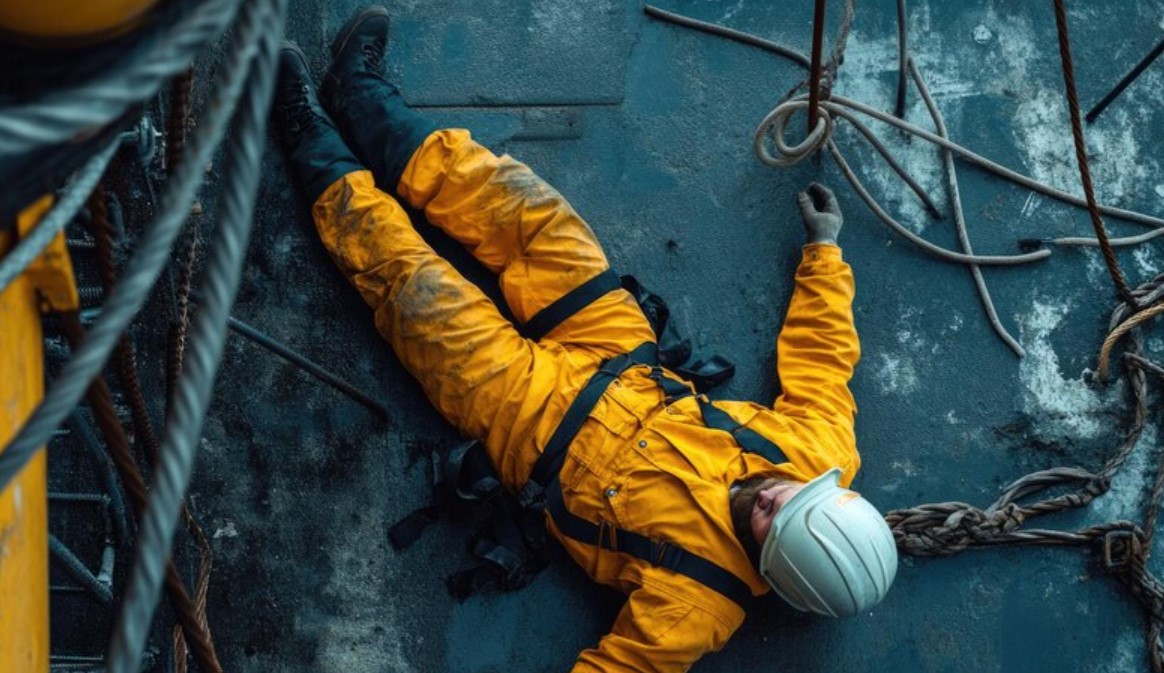When we think about workplace safety, we often picture hard hats, safety glasses, and well-marked hazards. However, one of the most significant threats in many industries is often overlooked: falling objects.
According to the Occupational Safety and Health Administration (OSHA), falling objects are responsible for a substantial number of injuries and fatalities each year. Understanding the risks posed by these silent threats and implementing effective strategies to combat them is crucial for ensuring a safe work environment.
Understanding the Risks of Falling Objects
Falling objects can include anything from tools and equipment to materials and debris. In many workplaces, especially in construction and manufacturing, these items are frequently above workers’ heads, making them vulnerable to falling hazards. Statistics indicate that about 50% of construction-related injuries stem from falling objects. This highlights the urgent need to address this issue.
Common scenarios where falling objects pose risks include construction sites, warehouses, and industrial plants. For instance, on construction sites, tools can easily slip from scaffolding, while in warehouses, stacked items may tumble due to improper storage. Understanding where and how these incidents occur is the first step toward preventing them.
Strategies to Combat Falling Object Risks
Proper Training
One of the most effective ways to reduce the risk of falling objects is through proper training. Workers should be trained to recognize potential hazards and understand safe handling practices. Training programs should include:
- Use of Personal Protective Equipment (PPE): Workers should be educated about the importance of wearing hard hats and other protective gear.
- Safe Handling Practices: Training should cover how to secure tools and materials properly to prevent falls.
Use of Safety Equipment
Utilizing safety equipment is critical in preventing accidents related to falling objects. Essential safety gear includes:
- Hard Hats: These should be mandatory in areas where falling objects are a risk.
- Tethers: Using tethers is an effective way to secure tools and equipment, ensuring they remain attached to workers or stable structures.
Implementing Safety Protocols
Implementing safety protocols can significantly reduce the risk of falling objects. Key measures include:
- Site Inspections: Regular inspections can help identify potential hazards and ensure that safety measures are in place.
- Tool and Material Storage: Best practices for securing tools and materials include using designated storage areas, avoiding overloading shelves, and ensuring that items are stacked safely.
- Creating Exclusion Zones: Establishing areas where workers are kept clear of potential falling object hazards can help minimize risks.
Tethers are an essential tool for preventing falling objects on worksites. By securing tools and equipment to workers or fixed structures, tethers ensure that items do not fall and cause injuries. For example, when a worker is on a scaffold, attaching their tools with tethers keeps them from slipping off the edge. This simple yet effective solution can save lives and prevent injuries.
Technological Solutions
In addition to traditional safety measures, technology can play a role in reducing risks from falling objects. Some innovative solutions include:
- Safety Technology: Using drones for site inspections can help identify potential hazards without putting workers at risk.
- Wearable Safety Devices: Technology like smart helmets can alert workers to falling object risks or provide real-time data about site conditions.
The Consequences of Falling Objects
The consequences of falling objects can be severe. Injuries from these incidents can range from minor bruises to severe trauma. Common injuries include:
- Head Injuries: A hard hat may protect workers to some extent, but severe impacts can still cause concussions or skull fractures.
- Fractures: Falling objects can lead to broken bones, especially in the arms, legs, and ribs.
- Lacerations: Sharp tools or materials can cause cuts, sometimes resulting in significant blood loss or infection.
In addition to physical injuries, the emotional and financial impacts on affected workers can be devastating. Workers may experience anxiety or fear about returning to work, and medical expenses can pile up quickly. From a business perspective, companies may face legal liabilities and increased insurance costs due to workplace accidents, affecting their bottom line.
Identifying High-Risk Areas
Certain locations within a worksite are more prone to falling objects. Understanding these high-risk areas is essential for implementing effective safety measures. Common locations include:
- Scaffolding and Elevated Platforms: Workers on scaffolds are at a higher risk of tools or materials falling from above.
- Storage Racks: Improperly secured materials in warehouses can easily fall, especially if they are stacked too high.
- Loading Docks: The movement of equipment and materials in loading areas increases the risk of falling objects.
Environmental factors can also increase these risks. Wind, vibrations from machinery, and overcrowded workspaces can all contribute to the likelihood of falling objects. Regular site assessments can help identify these hazards and mitigate their impact.
Promoting a Culture of Safety
Creating a culture of safety within an organization is essential for reducing risks associated with falling objects. Engaging workers in safety initiatives and encouraging them to report hazards can foster a sense of responsibility and awareness. Leadership support is also crucial; when management prioritizes safety, it sets a positive example for all employees.
Falling objects represent a significant and often underestimated threat to worksite safety. By understanding the risks, identifying high-risk areas, and implementing effective strategies, businesses can create a safer work environment for their employees.
The use of safety equipment like tethers, combined with proper training and a strong safety culture, can greatly reduce the incidence of accidents related to falling objects. Ultimately, prioritizing safety not only protects workers but also contributes to the overall success and reputation of the organization.





